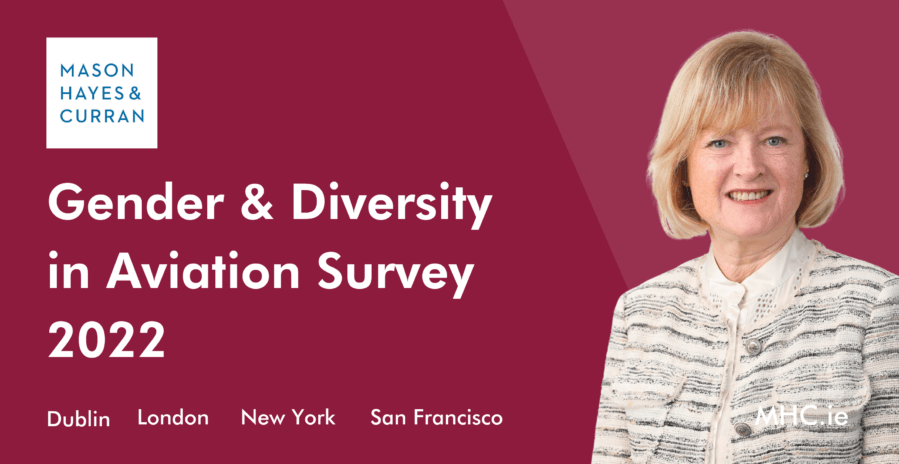
The aviation industry has experienced a stronger than expected return to business. The International Air Transport Association (IATA), in June 2022, announced an upgrade to its outlook for the airline industry’s 2022 financial performance, as the pace of recovery from the COVID-19 crisis quickens. Passenger revenues in 2022 are expected to account for $498 billion of industry revenues which is more than double the $239 billion generated in 2021. Willie Walsh, IATA’s Director General commented that “it is a time for optimism, even if there are still challenges.”
The aviation sector is rebounding. As we launch our 7th annual report focusing on the issues of gender, diversity and inclusion across the aviation industry, we take a hard look at the statistical information and again raise the topic of the real need for investment and support initiatives to drive further integration of women and minority groups at all levels in the aviation industry, especially at senior levels.

Gender & Diversity in Aviation Survey Results
The 2022 survey revealed that diversity at board or C-suite level has declined in recent years.
Just 17% of those surveyed report that the percentage of employees at C-suite or board level that identify as female, or as a member of a minority group, is greater than the generally accepted threshold of 30%. This figure peaked at 22% in 2020 with a gradual reduction year-on-year since then.
46% of those surveyed said that there had been no improvement in diversity at C-suite level in their organisations over the past 12 months, with 47% also reporting no improvement at board level.
Commenting on the results, Christine O’Donovan, chair of Mason Hayes & Curran, said: “Looking back on the results of the survey over the last seven years, I remain very concerned by the slow pace of change and low percentage improvement of diversity candidates in the Aviation industry. Average percentage representation in the upper echelons has stagnated well below the 30% level set for sophisticated international business. Career progression of women and diversity candidates appears to have flatlined.
The survey reflects the status of the industry at a particular point in time. It provides data and insights based on employee experiences. The aim in conducting the survey is to hold up a mirror to the industry on this subject, raise awareness and provide a reason for companies to take a hard look at their structures and to discover what are the real barriers to progress. Corporate policies and procedures on subjects such as equal opportunity hiring and promotion and non-discrimination are standard and necessary but they should not be allowed to languish and gather dust. The fundamental issue of equality should be recognised and embraced as an inherent part of the fabric and personality of any organisation.”
The results highlighted a 10% decline in the number of organisations with a Diversity & Inclusion Committee in place. The number fell from 51% in 2021 to 41% this year. Of those who don’t have a Diversity & Inclusion Committee, 66% now state that they believe their organisation would benefit from the setting up of a committee - an increase from 62% last year.
Surprisingly, given the recent introduction of mandatory gender pay gap reporting, almost half (48%) of respondents said their company has not conducted a gender pay gap analysis in the past 12 months. Just 11% confirmed their company has conducted an analysis, with 41% reporting that they were not aware if this had taken place.
Christine O’Donovan, chair of Mason Hayes & Curran LLP, further commented: “Publicity associated with reporting on board composition and C-suite highlights and celebrates the success of those at the very top. The successful few cannot effect change alone. The cultural tone in most organisations is set from the top. A simple and effective tool to embrace the gender issue is to establish diversity and gender committees with real power and authority to effect change. Participation on a diversity committee, without power, authority and a clear sense of what its objectives are, can be frustrating and unfulfilling. Organisations benefit from selecting and engaging the best people to work on this issue to call out areas for improvement and facilitate and incentivise change.
Organisations should also consider conducting a gender pay gap analysis, and share results with staff and stakeholders and, where needed, promptly effect measures to achieve equality in compensation levels for designated grades.”
About the Gender & Diversity in Aviation survey
We commenced the survey to draw attention to underrepresentation of women in senior roles. We want to use this attention to facilitate discussion and engagement in the aviation sector, with the aim of fostering and encouraging change. The survey was carried out during the summer of 2022 with more than 100 industry professionals.
Read more about the survey results in the Irish Independent and Irish Legal News.

Share this:





